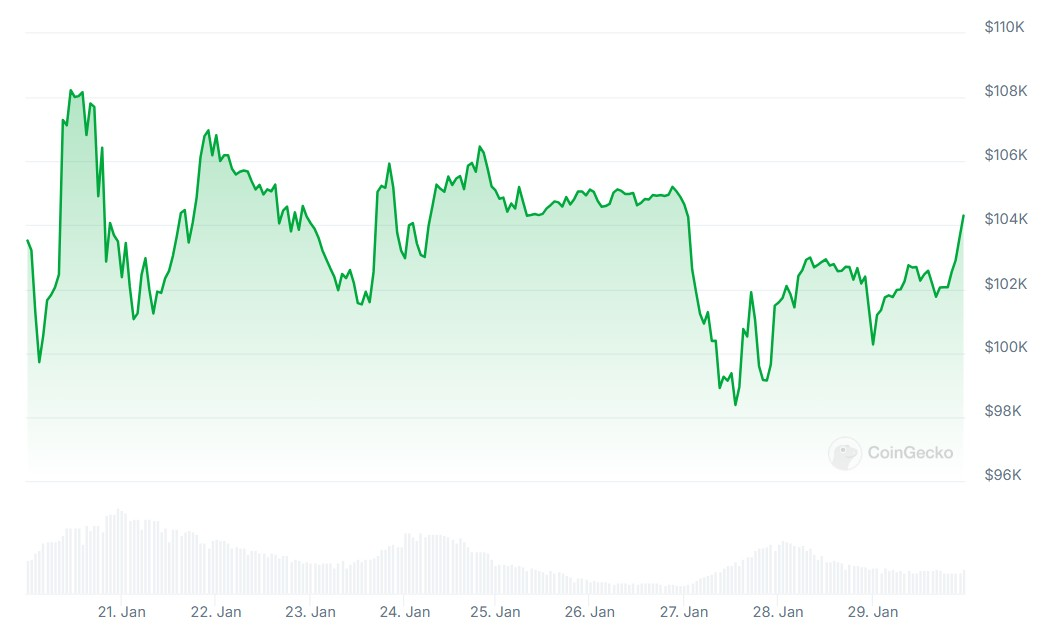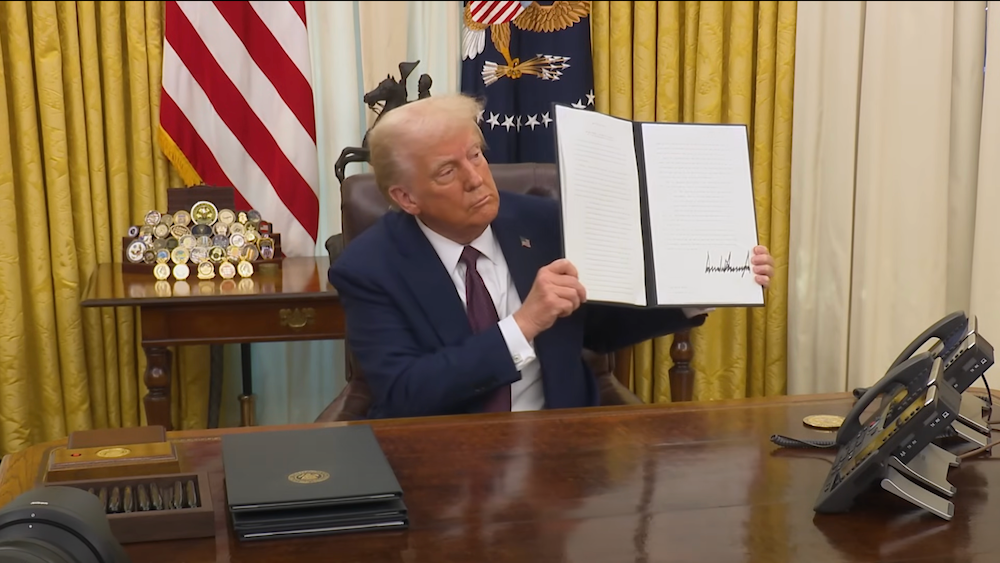Bitcoin fluctuation timeline in 2025: How does Trump’s tariff policy trigger a “roller coaster” market?

Reprinted from panewslab
03/28/2025·1MAuthor: Techub News

While Trump’s return to the White House ignited optimism in cryptocurrency markets early on, a global trade storm triggered by tariff policies eventually dragged Bitcoin from an all-time high of $109,000 into the deep valley of $78,000. This article reviews this epic market turmoil through key nodes.
Act 1: Three fires in the new official's appointment (January 2025)

On the day Trump was sworn in on January 20, the price of Bitcoin remained at a high of $107,000. On January 23, President Trump signed an executive order to form a digital asset working group to explore regulatory reforms in digital assets. However, just six days later, the Colombian immigration dispute triggered the first round of crisis - Trump threatened to impose a 25% tariff on goods imported from Colombia, and Bitcoin fell below the psychological threshold of $100,000. Although the two sides reached an agreement a week later to push the currency price back, the emergence of Chinese AI giant DeepSeek triggered a wave of selling technology stocks, and risk aversion spread to the crypto market.

Key data: Bitcoin’s single-day amplitude reached 12% from January 26 to 28, the largest fluctuation since May 2024.
February storm: Tariff Nuclear Button Launches
On February 1, Trump signed an executive order, announcing an increase of 10% tariffs on Chinese goods and 25% tariffs on Canadian and Mexican goods. With severe market reaction, Bitcoin plummeted 9.3% in a single day to $93,000. Although the temporary rebound in tariffs on North American neighbors has brought about a brief rebound, the steel tariff escalation and "peer-to-peer tariff" plan was announced on February 10, coupled with the Bybit Exchange's epic hacking incident, and finally, under the impact of copper tariff review news on February 25, Bitcoin fell below the $80,000 mark for the first time since November 2024.

Market Observation: BitMEX data shows that open contracts for futures in February decreased by 37%, indicating that a large amount of leveraged funds are withdrawing from the market.
March tug-of-war: Rest in the Swing of Policy
On March 4, the White House released a conflicting signal: the announcement of a strategic digital asset reserve plan containing XRP boosted confidence, but doubled China's tariffs to 20%. This "carrot and stick" strategy has allowed Bitcoin to continue to fluctuate in the range of $84,000-90,000. On March 18, the turning point of Finance Minister Bescent Besent expressed his first "differentiated tariffs" policy, suggesting that tariff escalation can be avoided if trading partners lower barriers. The market interprets this as the first ray of policy softening, with Bitcoin rebounding by 3.1% in a single day exceeding $85,000. On March 20, the Federal Reserve double assisted the Federal Reserve to keep interest rates unchanged, and the dot chart shows that interest rate cuts will be at least twice this year. The moment of the resolution announcement:
- Bitcoin jumps by $800 in one minute
- CME Bitcoin futures open contract surges by $1.1 billion
- The total market value of stablecoins has expanded by 4.3% per day (Tether CTO confirmed the issuance of 1.8 billion USDT)

On March 24, the policy resonance effect was stimulated by the dual stimulation of loose tariff policies and loose liquidity, Bitcoin rebounded 8.7% in a single week to approach $89,000. On-chain data shows that Giant Whale Address (holding more than 1,000 BTC) increased its holdings of 213,000 Bitcoins during this period, marking the largest single-week funding volume since the fourth quarter of 2024.
April Time Bomb: Market Anxiety Before Liberation Day
Despite signs of recovery in late March, the effective date of "reciprocal tariffs" on April 2 is like the sword of Damocles hanging high. Bitget Research Institute simulation deduction shows:
- If tariffs are fully implemented, it may trigger a contraction of $2.3 trillion in global trade
- Bitcoin’s correlation with traditional assets rose to 0.78 historical peak
- Supply chain disruption may result in an increase in mining machine production costs by 18%.
Institutional strategy: Liquifi monitored that the net inflow of stablecoins reached US$4.7 billion in the last two weeks of March, indicating that funds are "loaded" and are waiting for direction choices.
Market Revelation: Adult Gift for Digital Currencies
This crisis has exposed the deep transformation of the cryptocurrency market:
- Increased policy sensitivity: BTC and S&P 500 have three-month correlation exceeded 0.7
- Differentiation of safe-haven attributes: gold rose 23% during the same period vs. Bitcoin fell 28%
- Regulatory arbitrage ends: US Treasury Department has frozen on-chain assets worth $1.2 billion suspected of tariff evasion
As Amber Group analysts said : "When a presidential tweet can instantly erase the market value of $30 billion, this market can no longer pretend to live outside the law." This baptism may be a compulsory course for cryptocurrencies to integrate into the mainstream financial system.



 chaincatcher
chaincatcher